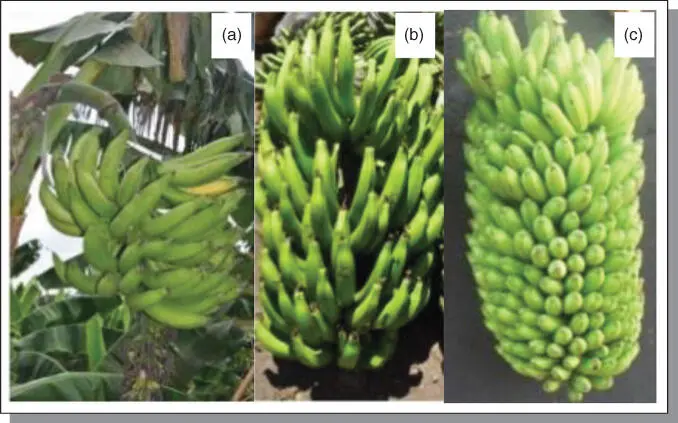
Figure B7.1Variations in phenotypic expressions of different ploidy constitutions of plantain and banana fruits. (a) = triploid plantain (ABB); (b) = diploid banana (AA); (c) = triploid banana (AAA) (IITA+banana&fr = tightropetb&imgurl=http%3A%2F).
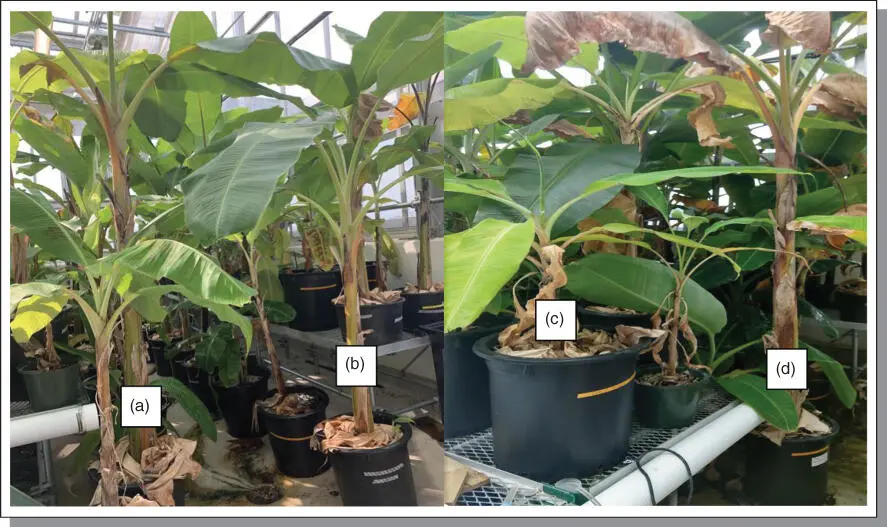
Figure B7.2Different accessions of banana and plantain being maintained in the greenhouse at Natural Science Department, Bowie State University: (a) = plantain (Poteau Geant, ABB); (b) = Plantain (Pata, ABB); (c) = banana (Gros Michel, AAA); and (d) = plantain (Balonkawe, ABB).
Source: Picture – Natural Science Department Greenhouse, Bowie State University.
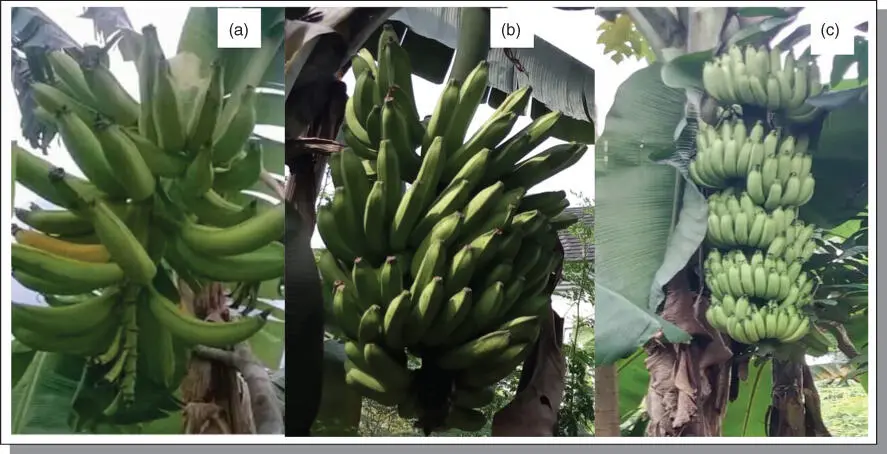
Figure B7.3Phenotypic comparison of plantains and bananas in their fruits form. (a) = bunch of Agbagba plantain fruits on plantain tree; (b) = bunch of plantain hybrid PITA 2 with fruits; and (c) = bunch of banana fruits (IITA+banana&fr = tightropetb&imgurl = http%3A%2F).
Production of these vital crops is challenged by pathogenic and abiotic factors. With rising global temperatures, which are expected to have drastic effects including altered patterns of drought, salinity, emergence of new pests, and diseases, plant growth and yield will be adversely impacted (Tester and Langridge 2010). Using informative molecular markers for assessment of genetic diversity to harness allelic richness, and selecting those with unique and desired traits for rapid production, maintenance, and germplasm conservation via plant tissue culture techniques, would be the right combination of tools to obtain favorable genotypes and to ensure periodic availability of good planting materials for farmers. This is vital since the world population is growing fast and is expected to reach over 9 billion by the year 2050 (FAO 2015). Feeding this overwhelming population level is generating much pressure on agricultural crop production (Dempewolf et al. 2014; Khoury et al. 2014).
Genetic diversity and population structure of Musa species using CDDP, ISSR, and SCoT markers
To increase food supply, especially Musa species, harnessing genetic diversity and novel traits can result in developing new genotypes that are capable of withstanding changing environmental factors, since populations with narrower range may fail to survive climatic extremes. There are now very informative and cost‐effective molecular markers that target conserved domains and can effectively exploit the genetic indices or gene pools inherent in banana and plantain plants as well as their wild relatives for crop genetic improvement. It has been reported that structural variant genes possessing presence or absence of variants contribute to diversity of the gene pool (Golicz et al. 2016). Identification of Musa accessions (wild and elite ones) that can be adopted and optimized to perform in diverse environmental conditions based on abundant allelic diversity is very important, since the optimal development of these accessions is dependent on the allelic/genetic diversity (Montenegro et al. 2017). Knowledge of genetic diversity within accessions of Musa species with diverse genomic groups can facilitate the efficiency of breeding programs. Comparatively, assessing the effectiveness of different molecular markers is essential for identification of appropriate ones for genetic improvement and germplasm conservation.
Conserved DNA‐derived polymorphism (CDDP), inter‐simple sequence repeat (ISSR) and start codon targeted (SCoT) markers
Conserved DNA‐derived polymorphism (CDDP) markers comprising transcriptional factors (TFs) – MYB, ERF, WRKY, and APB – are cost‐effective, target‐conserved sequences of plant functional genes, and possibly produce candidate markers that may be partly or completely associated with known genes (Collard and Mackill 2009). Furthermore, CDDP marker techniques are agarose gel‐based, convenient, highly polymorphic, and capable of generating markers that are phenotypically linked to traits (Collard and Mackill 2009). The CDDP markers are similar in principle to resistance gene analog markers, designed from conserved regions in plant disease resistance genes (Chen et al. 1998). They possess different putative domains including auxin‐binding proteins, transcriptional factors for development, physiology, fruiting, and ripening processes, plant disease resistance pathways, secondary metabolism, abiotic and biotic stresses, and cellular morphogenesis (D'Hont et al. 2012). It has been shown that, within functional domains of well‐characterized plant genes, the CDDPs can generate informative banding patterns that are utilized for mapping, trait association, and germplasm genetic diversity studies (Collard and Mackill 2009; Poczai et al. 2013). Due to the inherent efficiency and ability of CDDP to easily generate functional markers (FMs) that are associated with given plant phenotypic expressions, they have been used in the improvement of different crops including Rosa rugosa (Jiang and Zang 2018); Chrysanthemum cultivars (Li et al. 2013); Peony cultivar (Li et al. 2014); bittersweet ( Solanum dulcamara ) (Poczai et al. 2011); date palm (Mam et al. 2017); Chickpea ( Cicer arietinum L.) (Hajibarat et al. 2015); rice ( Oryza sativa ) (Collard and Mackill 2009); and wheat ( Triticum aestivum L.) (Hamidi et al. 2014; Seyedimoradi et al. 2016).
Inter‐simple sequence repeat (ISSR) markers are arbitrary and target multiple genomic loci for amplification of DNA segments present between two identical microsatellite regions that are opposite with each other in orientation (Zietkiewicz et al. 1994), while SCoT markers were developed to target the conserved regions of the genome across various plant species due to their longer primer lengths and high annealing temperatures (Collard and Mackill 2009). However, ISSR and SCoT markers have been found useful in various crops for genetic diversity studies because of their high reproducibility and efficiency for detecting polymorphisms (Guo et al. 2012; Hamidi et al. 2014; Lamare and Rao 2015; Etminan et al. 2016; Igwe et al. 2017). Here, we utilize a basic systematic approach ( Figure B7.4) involving the informative molecular markers (CDDP, SCoT, and ISSR) that generate unique and reproducible alleles ( Figures B7.5– B7.7) to assess vital genetic diversity indicators and population structure of Musa species accessions for identification of those with novel traits and unique allelic variants. The identified ones are selected for mass production, maintenance, and germplasm conservation to ensure continuous availability to the farmers and breeders.
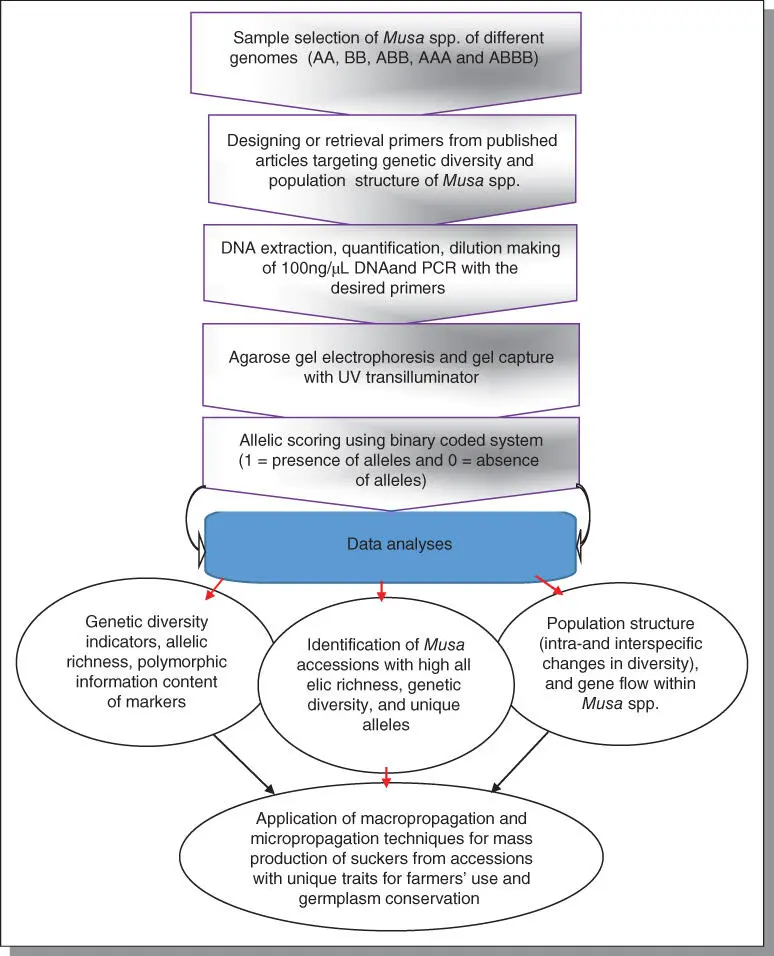
Figure B7.4Summary of research activities on Musa species at the Center for Natural Sciences, Nursing, and Mathematics, Department of Natural Sciences, Bowie State University.
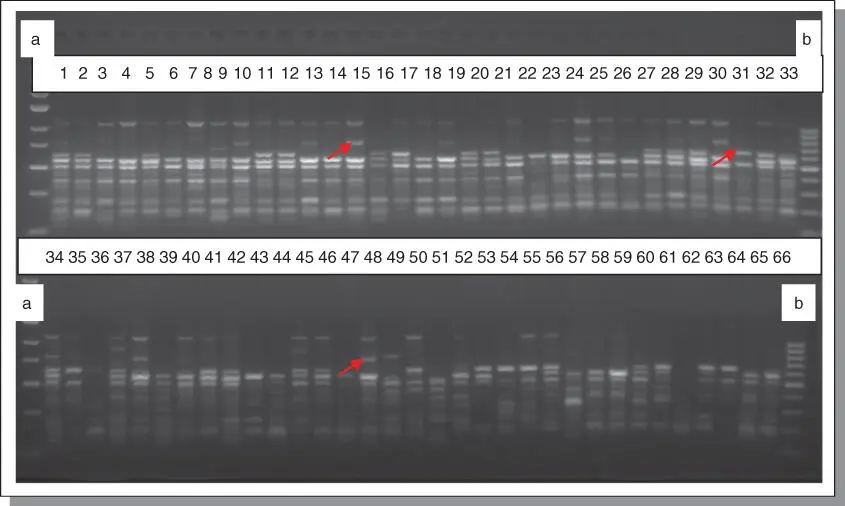
Figure B7.5Amplification profiles of 66 banana and plantain samples using WRKYMus1a primer of CDDP marker gene: a = 1 kb step DNA ladder and b = 100 bp DNA ladder. Sample order (1–66 from left to right): 1 = Fougamou 1, 2 = Obino I'Ewai, 3 = Calcutta 4, 4 = Improved Lady Finger, 5 = Blue Torres Strait Island, 6 = Silk, 7 = Truncata, 8 = Cardaba, 9 = Lidi, 10 = Pelipita, 11 = Pelipita Manjoncho, 12 = Lai, 13 = Higa, 14 = Pisang Keling, 15 = Pisang Lawadin, 16 = Balonkawe, 17 = Gros Michel, 18 = Green Red, 19 = Plantain no.3, 20 = Pata, 21 = Chinese Cavendish, 22 = Dwarf Parfitt, 23 = Hochuchu, 24 = Umalag, 25 = Hsein Jen Chiao, 26 = Mons Mari (Pedwell), 27 = Lady Finger (Nelson), 28 = Pisang Rajah (South Johnstone), 29 = Tani, 30 = Pisang Lilin, 31 = Poteau Geant, 32 = Pisang Klutuk Wulung, 33 = Garbon 2, 34 = Zebrina (G.F), 35 = Khae (Phrae), 36 = Dole, 37 = Wompa, 38 = Pisang Palembang, 39 = Pisang Awak, 40 = Williams (Bell, South Johnstone), 41 = Plantain No.17, 42 = Kluai Tiparot, 43 = Tiau Lagada, 44 = Niyarma Yik, 45 = Selangor, 46 = Long Tavoy, 47 = Malaccenesis, 48 = Figure Pomme Geante, 49 = Highgate, 50 = Borneo, 51 = Honduras, 52 = Pome, 53 = Kunnan, 54 = Musa beccarii, 55 = Musa coccinea, 56 = JD Yangambi, 57 = Musa textilis , 58 = Tomolo, 59 = Pisang Berlin, 60 = FHIA‐23, 61 = No. 110, 62 = Dwarf Cavendish, 63 = SH‐3436‐6, 64 = Lal Velchi, 65 = Madang, and 66 = FHIA‐21 (#68). The primer, WRKYMus1a of CDDP marker, demonstrates polymorphism as indicated by the red colored arrows in the gel image.
Читать дальше

















